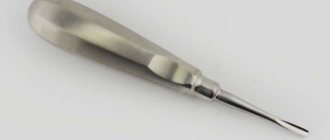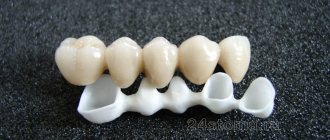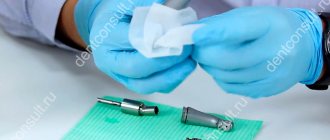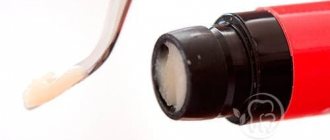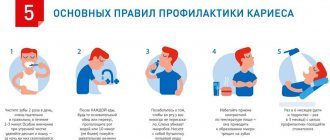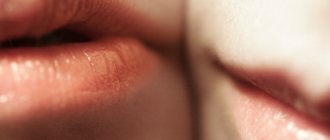Sterilization of instruments is one of the most important aspects of the work of any dental clinic. And to meet these high standards, it is necessary not only to have sterilization equipment, but also to carry out the procedures correctly. There is a special series of procedures developed by SanPin for disinfecting instruments, following which you will get the desired result:
- First, disinfection is carried out
- Next comes pre-sterilization cleaning.
- Tool packaging
- Autoclaving
- And proper storage of sterile instruments
Stage one. Disinfection of instruments.
Disinfection, as many have already guessed, is just the primary stage of preparing instruments. Like any other process in dentistry, the disinfection of instruments has long been automated, but most specialists are accustomed to trusting only themselves. And that is why we will consider the mechanical method of processing dental instruments. Disinfects everything: turbine tips, burs, spatulas - everything that a specialist’s hand touches. However, it is worth understanding that the tools have different surface structures and, most importantly, different processing techniques. For example, burs and all-metal instruments in general can be completely immersed in a container with a disinfectant solution, which absolutely cannot be done with dental handpieces. Note... Carefully read the instructions for using the disinfectant. Ultra-high concentrations can have a negative effect on the surface of the tool material. In the case of turbine tips, you can use special wipes.
Dental instruments for dental treatment
In their practice, dentists use various dental instruments to examine the patient’s oral cavity and treat damaged teeth. Each instrument has its own purpose and is used for the doctor’s most painless manipulations with damaged teeth and gums.
Inspection Instruments
The dentist, after listening to the complaints of the patient who contacted him, must carry out an examination, which consists of a thorough examination of the oral cavity and teeth. A professional dental examination is carried out using diagnostic tools:
— diagnostic mirror – is a round mirror on a long handle and is used to examine areas in the patient’s mouth that are difficult to access and invisible during visual inspection; - probe - looks like a hook with a long handle and is used to determine defects and dental caries, the depth of the carious cavity, its density and sensitivity, as well as the presence of tartar; - tweezers - used by the doctor to determine how loose the tooth is, as well as to place or remove a cotton swab.
Tools for treatment
Treatment of a carious cavity discovered during examination by a dentist consists of several complex stages:
- opening of the cavity; — cleansing and removal of damaged tooth tissues; — filling the cleaned cavity.
Special dental instruments are also used to treat caries:
- dental excavator - is an elongated holder with curved thin ends on both sides, used to remove temporary fillings, food debris and soft damaged tooth tissues; the excavator also removes plaque and deposits on the teeth; - smoothers and spatulas - they are a long holder with spatulas on both sides; they are used to mix filling materials and place them in the open cavity of the tooth; - bur - used to open the cavity and clean it from tissues affected by caries; there are several types of burs for the convenience of cleaning cavities of different shapes, sizes and depths; - disc - used after closing the cavity with a filling to smooth its surface and sharp edges that could remain after treatment with boron; - polisher - the purpose of polishers is the same as that of discs, but they have a different shape. Using the listed tools, the dentist will conduct a preventive and diagnostic examination and save the patient from caries and other dental defects.
Stage two. Pre-sterilization cleaning of the disinfector
Any disinfectant is, first of all, a fairly strong chemical composition that must be removed from the surface of the instruments. In the case of smooth surfaces, using a special brush and running water is sufficient. But in the case of an uneven surface, such as diamond burs, immersion in an ultrasonic bath is necessary. However, it is worth remembering that high-tech instruments, such as tips, cannot be processed in an ultrasonic bath. It is for this reason that many experts recommend choosing collapsible tip models. It is easier to disassemble them and carry out the procedures separately, for example, using disinfectant wipes
Dental instruments, classification
Dentists' instruments can be classified into the following groups:
- For use in examination and diagnosis;
- Used directly for dental treatment;
- With which the doctor removes deposits from the teeth;
- Instrumentation for dental prosthetics;
- Devices for tooth extraction;
The basic composition of the instruments that the dentist uses during examination: a tray, a dental mirror, various types of tweezers and probes.
Devices used in treatment include polishing and diamond heads, discs, and burs.
When filling and getting rid of softened tissues, the dentist uses an excavator, a plugger and a host of other devices.
There are special instruments for the dentist's actions in root canals.
Auxiliary instruments for treatment are matrices, strips, brushes for lubricating the tooth surface with liquid, etc.
The instruments used to remove deposits from teeth primarily include: curettes, enamel knife, root file, scalers.
There are many types of instruments for dental prosthetics. The main ones are: impression trays, all kinds of spatulas, a micrometer, instruments used to determine the central closure of teeth.
Tools for pulling out teeth include anatomical forceps. Some of them are intended for the upper jaw, others for the lower jaw.
The group described above also includes devices for removing roots; they are called elevators and can be angular, straight or bayonet-shaped.
Instruments used to separate gums before extracting a tooth are also considered instruments used in tooth extraction.
Other instruments of this type include a syringe with anesthetic, various curettes, clamps, and needle holders.
Stage three. Tool packaging
Packaging becomes the most important stage of sterilization. And here the question arises from a completely different angle. The wrong approach can cost someone their life. But let's start from the very beginning. Packaging bags are available in different sizes and this greatly simplifies the work. For packaging, tools are used in bags and special machines are used. Now let's move on to the manufacturing stages
Stages of sealing bags in a packaging machine
- First you need to pass a package of rolls through the machine that matches the size of the tool.
- Seal the package with tools
- Cut and remove the package
After which, at the exit you will receive a package of the size you need and, most importantly, sealed. But it's worth remembering this. The packaging bags have a transparent film on one side and paper on the other. But they do not use simple paper, but with membranes through which air and steam pass, thereby sterilizing it. That is why you should place instruments in the tray with the paper side up only before autoclaving.
Stopfer
Description, purpose
This is a tool for compacting filling material in a carious cavity and retrograde filling of the root canal.
Kinds
A dental plugger consists of a metal handle and working parts, which have several structural options:
- spherical;
- cylindrical;
- cone-shaped;
- reverse cone;
- three-cornered.
Made from medical steel. Most often it comes with an ironing board.
Stage four. Autoclaving
Today, autoclaving is considered the safest and most importantly effective method of sterilizing instruments. The advantages of an autoclave are simply numerous:
- Guarantees 100% result
- No manual work
- Reliable
In order to avoid mistakes when processing dental instruments, several rules should be followed:
- Place bags correctly on trays, namely with the paper side up
- The packages in the tray should not overlap each other, but should be positioned freely
- There should be a small distance between the bags for the circulation of vapors and air
By following all these steps and rules, you will end up with sterilized instruments.
Putty knife
Description, purpose
This is a tool that is used for mixing various materials and modeling prosthetic structures.
Therapeutic spatula is used for mixing:
- cement, fillings;
- medicinal dressings.
Mixing the components of the material to the required consistency is done with spatulas, rubbing them on the glass. The laboratory spatula is designed for mixing impression materials, plaster, and casting plaster models. Modeling spatulas, dental and therapeutic metal spatulas are used to model the prosthesis with wax. An electric dental spatula is also used.
Kinds
The spatula can be:
- metal or plastic;
- therapeutic, laboratory, modeling;
- one- and two-sided.
The metal instrument is made of medical steel. Plastic is used when mixing materials that may change color (for example, a chemical composite).
Dental spatula in the photo:
Manufacturers and cost
Manufacturers: HLW Dental Instruments (Germany), IVOCLAR VIVADENT (Liechtenstein). Price – from 120 rubles.
